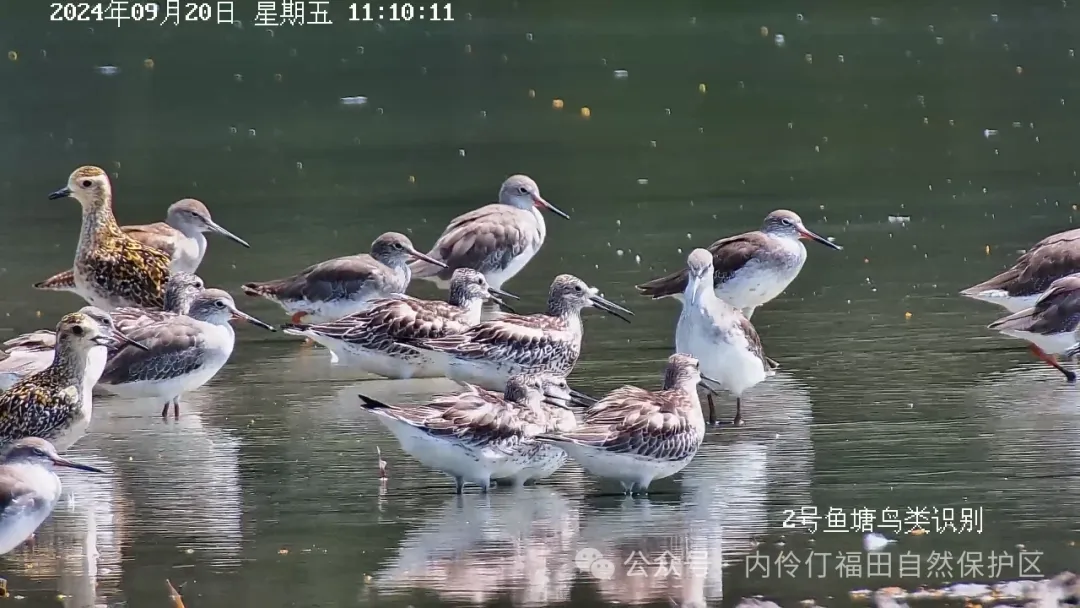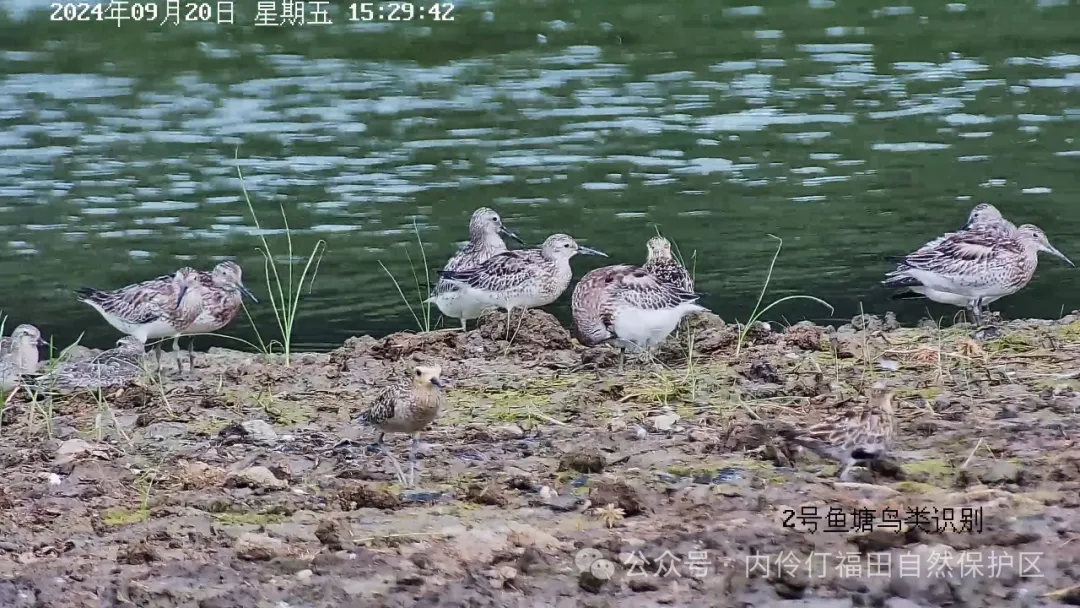
In a significant birdwatching observation, a flock of 11 Great Knots (Calidris tenuirostris), a species of small wading bird, was spotted at the Futian mangrove wetland in Shenzhen on Friday.
This represents the largest recorded sighting of this bird genus at the reserve in nearly a decade, the Guangdong Neilingding Futian National Nature Reserve Management Bureau said in a post on its official WeChat account.
The Great Knot is a distinctive shorebird, characterized by its short dark legs, thin dark bill, spotted head, and pale grey plumage. These birds undertake an impressive annual migration, breeding in northeast Siberia and wintering in Australia. During their journeys, they stop over and rest on the coastal tidal flats of southern Asia.
A Great Knot can lose up to half of its body weight while making the long, nonstop flight across the ocean from Australia. Upon reaching Shenzhen Bay, the birds "feed like crazy" to regain their strength, consuming a wide diet of crustaceans, mollusks, and insects.

The Futian mangrove wetland has become an increasingly attractive stopover location for migratory birds like the Great Knot, thanks to ongoing protection and scientific management efforts.
Once dominated by fishing ponds, the wetland was designated as a nature reserve in 2006. Since then, the area has been carefully engineered to create a diverse range of habitats, including deep water, shallow water, and mudflats, to cater to the needs of various waterbird species.
Recognizing the birds' sensitivity to water levels, the reserve has also implemented a smart sluice gate management system. Through remote-controlled water exchange timed with the tides, the system helps maintain optimal foraging conditions and an abundant "food pantry" for the visiting waterbirds.


